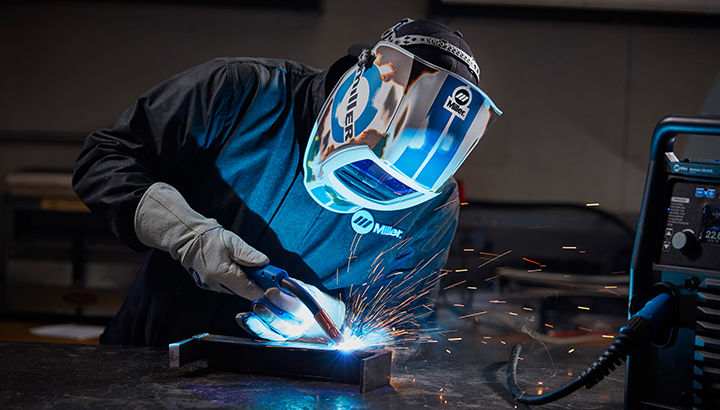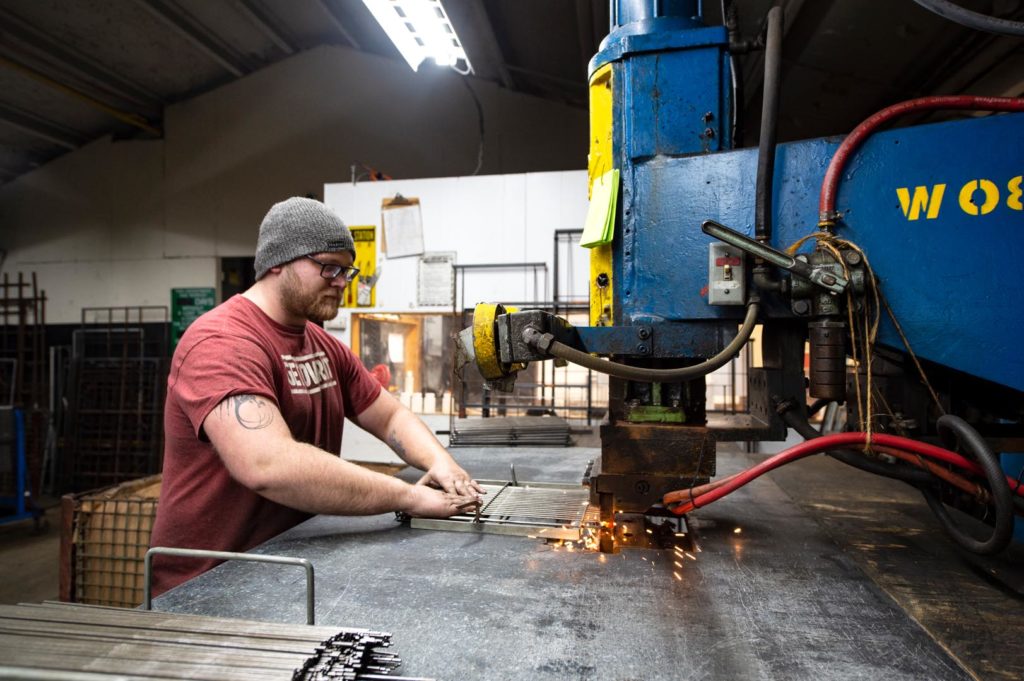How to achieve perfect fusion with Montana Mobile Welding and Repair Belgrade Fabrication
Wiki Article
Everything about Welding: Trick Insights Into Techniques and Finest Practices for Success
Welding incorporates a selection of techniques, each matched for particular materials and applications. Comprehending these methods, such as GMAW, SMAW, and TIG, is crucial for achieving ideal outcomes. The best equipment and safety practices can not be overlooked. As prep work and fixing play essential duties in the welding procedure, mastering these aspects can considerably improve the quality of the end product. What are the key elements that guarantee a successful weld?Recognizing Various Welding Methods
Welding strategies encompass a selection of methods, each matched to certain applications and products. Among one of the most typical methods are Gas Steel Arc Welding (GMAW), Protected Steel Arc Welding (SMAW), and Tungsten Inert Gas Welding (TIG) GMAW, likewise recognized as MIG welding, is popular for its speed and versatility, making it perfect for slim materials. SMAW, or stick welding, is preferred for its simplicity and effectiveness in outdoor atmospheres, particularly with thicker metals. TIG welding uses precision and control, making it ideal for elaborate job and non-ferrous steels (Belgrade). Each technique has its one-of-a-kind advantages and factors to consider, permitting welders to choose the very best technique based upon the project's needs, product type, and desired outcomes. Recognizing these techniques is essential for successful weldingCrucial Welding Devices and Devices
While numerous welding techniques require details abilities, the appropriate devices and tools are similarly essential for attaining high quality outcomes. Vital welding devices includes welding makers, which vary depending upon the strategy-- such as MIG, TIG, or stick welding. Protective equipment, including aprons, handwear covers, and headgears, guarantees safety and convenience throughout the procedure. On top of that, fixtures and clamps help protect products in position, making certain precision in welds. Consumables like welding poles, cable, and securing gas are also crucial components that affect the high quality of the weld. Moreover, tools such as cutters and grinders assist in surface preparation and post-weld finishing, adding to a specialist end result. Buying high-quality tools inevitably boosts the efficiency and performance of welding jobs.Safety Practices in Welding
Correct safety practices are crucial in the welding market to safeguard employees from possible hazards. Welders have to use suitable personal safety devices (PPE), including headgears with appropriate shading, handwear covers, and flame-resistant apparel. Ample ventilation is important to reduce exposure to damaging fumes and gases created throughout the welding procedure. Furthermore, employees must be educated in the appropriate handling of welding devices to stop mishaps. Fire precaution, such as maintaining flammable materials away from the welding area and having fire extinguishers easily offered, are essential. Regular examinations of equipment and offices can help recognize potential risks prior to they lead to mishaps. By sticking to these safety and security practices, welders can produce a more secure working setting and decrease risks connected with their profession.Readying Materials for Welding
Preparing materials for welding is an important action that significantly affects the high quality and stability of the last item (Montana Mobile Welding and Repair Belgrade Fabrication). Appropriate preparation includes cleansing the surface areas to remove pollutants such as dust, corrosion, and oil, which can compromise the weld. Strategies such as grinding, fining sand, or making use of solvents are frequently utilized to accomplish a tidy surface area. In addition, making sure that the materials mesh snugly is essential; gaps can result in weak welds. It's additionally vital to consider the placement and positioning of the elements, as this will affect the convenience of welding and the last end result. Finally, selecting the proper filler product and making sure compatibility with the base metals is vital for achieving solid, resilient weldsTips for Achieving High-Quality Welds
Achieving top quality welds needs focus to information and adherence to ideal practices throughout the welding process. Correct joint prep work is essential, making certain surface areas browse around this web-site are totally free and clean from impurities. Picking the ideal filler material and welding method based on the base steels is critical for ideal bonding. Keeping consistent travel speed and angle while welding can avoid problems and advertise uniformity. Additionally, controlling heat input is essential; extreme warm can bring about warping and damaged joints. If necessary, frequently checking the welds throughout the process allows for immediate adjustments. Ultimately, using proper post-weld treatments, such as cleansing and anxiety alleviation, can improve the longevity and integrity of the weld, inevitably making certain an effective end result.Fixing Typical Welding Issues
Welding often presents obstacles that can impact the high quality and stability of the end product. Common concerns such as porosity, inconsistent weld grains, and getting too hot can occur, each needing certain troubleshooting strategies. Recognizing these troubles is necessary for welders to improve their skills and attain optimal results.Porosity Troubles Clarified
Although porosity can usually be overlooked, it stays an important issue in welding that can endanger the stability of an ended up item. Porosity refers to the presence of tiny gas pockets within the weld grain, which can lead and deteriorate the joint to premature failing. This trouble commonly arises from pollutants, moisture, or incorrect securing gas insurance coverage during the welding procedure. To mitigate porosity, welders need to verify that the base Learn More materials are dry and tidy, utilize proper securing gases, and maintain constant welding parameters. Frequently examining the devices and environment can additionally aid determine possible problems before they manifest in the weld. Resolving porosity successfully is vital for attaining solid, durable welds that meet high quality requirements.
Inconsistent Weld Beans
Inconsistent weld grains can substantially impact the quality and toughness of an ended up item. Different variables contribute to this problem, consisting of improper traveling rate, wrong amperage settings, and irregular electrode angles. When the welder relocates as well swiftly, a grain might appear slim and do not have penetration, while relocating too slowly can cause excessive accumulation. In addition, using the wrong amperage can result in either undercutting or too much spatter, both of which concession weld integrity. The welder's method, such as irregular lantern motion, can additionally lead to unequal bead appearance. To minimize these problems, welders need to concentrate on preserving stable, controlled motions and ensuring correct equipment setups to accomplish harmony in their welds. Uniformity is crucial to attaining reputable and solid welds.Overheating and Bending Issues
Too much warmth during the welding process can cause substantial getting too hot and buckling concerns, impacting the structural honesty of the work surface. These issues usually manifest as distortion, which can jeopardize positioning and fit-up, making more assembly challenging. Aspects contributing to overheating include the selection of welding parameters, such as voltage and take a trip speed, along with the type of material being welded. To reduce these concerns, welders should maintain consistent traveling speed and suitable heat input while keeping track of the work surface temperature. In addition, preheating or post-weld warmth therapy can help ease stresses triggered by fast air conditioning - Welding. Regular inspection and adherence to ideal practices are important in avoiding getting too hot and making certain the long life and integrity of bonded frameworksOften Asked Inquiries
What Are the Profession Opportunities in the Welding Industry?
The welding sector offers diverse profession possibilities, consisting of positions as welders, teachers, designers, and examiners. Experts can work in manufacturing, building and construction, aerospace, and automotive fields, benefiting from strong demand and competitive wages in various duties.How Can I Enhance My Welding Rate Without Giving Up Quality?
To improve welding rate without compromising quality, one ought to exercise reliable techniques, keep devices, maximize setups, and enhance hand-eye sychronisation. Regular training and looking for responses can likewise considerably contribute to achieving much faster, high-quality welds.What Accreditations Are Offered for Welders?
Countless accreditations exist for welders, including those from the American Welding Society (AWS), the National Center for Building Education and Study (NCCER), and numerous industry-specific companies. These credentials boost employability and demonstrate ability efficiency.How Does Welding Influence the Properties of Metals?
Welding affects the properties of metals by changing their microstructure, which can bring about adjustments in ductility, stamina, and solidity. Heat input and cooling rates during the process significantly influence these material features.Can I Weld Dissimilar Metals Together?

Report this wiki page